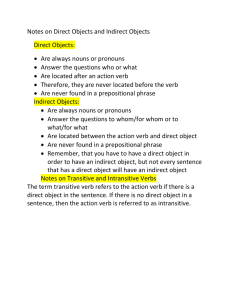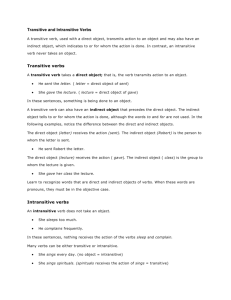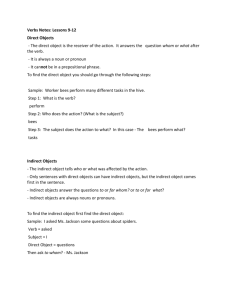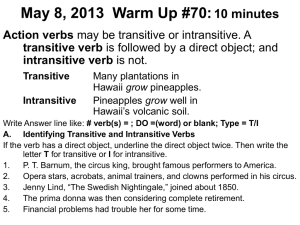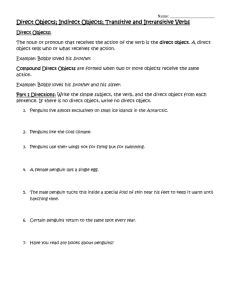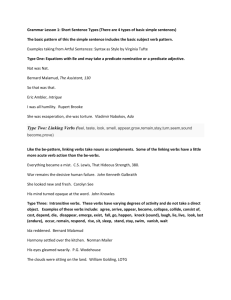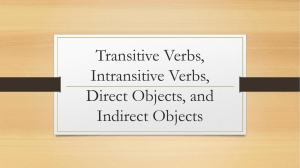Direct and Indirect Objects
advertisement
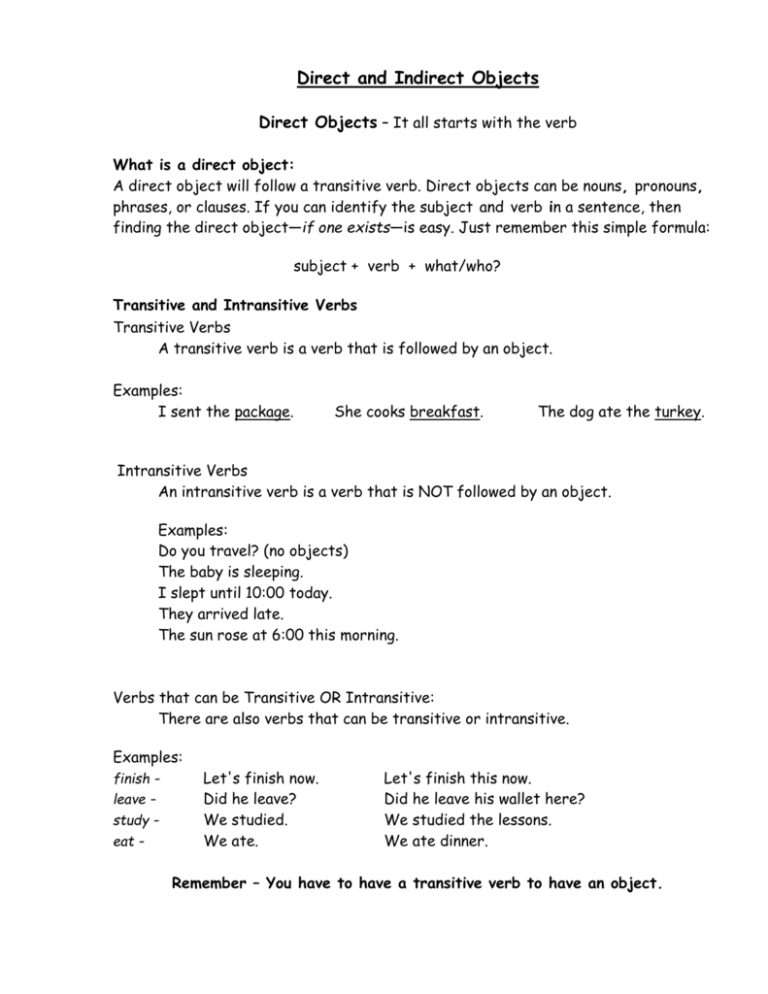
Direct and Indirect Objects Direct Objects – It all starts with the verb What is a direct object: A direct object will follow a transitive verb. Direct objects can be nouns, pronouns, phrases, or clauses. If you can identify the subject and verb in a sentence, then finding the direct object—if one exists—is easy. Just remember this simple formula: subject + verb + what/who? Transitive and Intransitive Verbs Transitive Verbs A transitive verb is a verb that is followed by an object. Examples: I sent the package. She cooks breakfast. The dog ate the turkey. Intransitive Verbs An intransitive verb is a verb that is NOT followed by an object. Examples: Do you travel? (no objects) The baby is sleeping. I slept until 10:00 today. They arrived late. The sun rose at 6:00 this morning. Verbs that can be Transitive OR Intransitive: There are also verbs that can be transitive or intransitive. Examples: finish leave study eat - Let's finish now. Did he leave? We studied. We ate. Let's finish this now. Did he leave his wallet here? We studied the lessons. We ate dinner. Remember – You have to have a transitive verb to have an object. Remember this Magic Formula for Direct Objects: A transitive verb has a direct object. You learned to find the direct object in a sentence using this formula: First locate the subject and the verb then ask this question to what or who The answer to "what/who" is the only one that gives a direct object. NOT "when, where, how, to whom, for whom." What does this mean? Let's use our formula to see if "left" has a direct object in this sentence. John left early on his bike to go to the movie with his friends. John + left + what? (no answer is in the sentence) John + left + who? (no answer is in the sentence) You can find answers to all of these questions, right? John + left + when? (early) John + left + why? (to go to the movie) John + left + how? (on his bike) John + left + with whom? (with his friends) But time, place, reason, manner, location are NOT objects. They are adverbs. Indirect Objects The sentence must have a direct object to have an indirect object. What is an indirect object: The indirect object of the verb answers the question “To Whom?” and “To What?” or “For What?” and “For Whom?” something is done or given. The indirect object is typically located between the verb and the direct object. i.o. d.o. Ex. Tell me a story. (Tell a story to whom? Answer = me) i.o. i.o. d.o. Joe did her and me a favor. (Did a favor for whom? Answer = her, me) If words to and for appear in the sentence, they become part of a prepositional pharse. i.o. d.o. Ex. Helen told Sue a joke. Helen told a joke to Sue. (“to Sue” is a prepositional phrase, not an indirect object)
